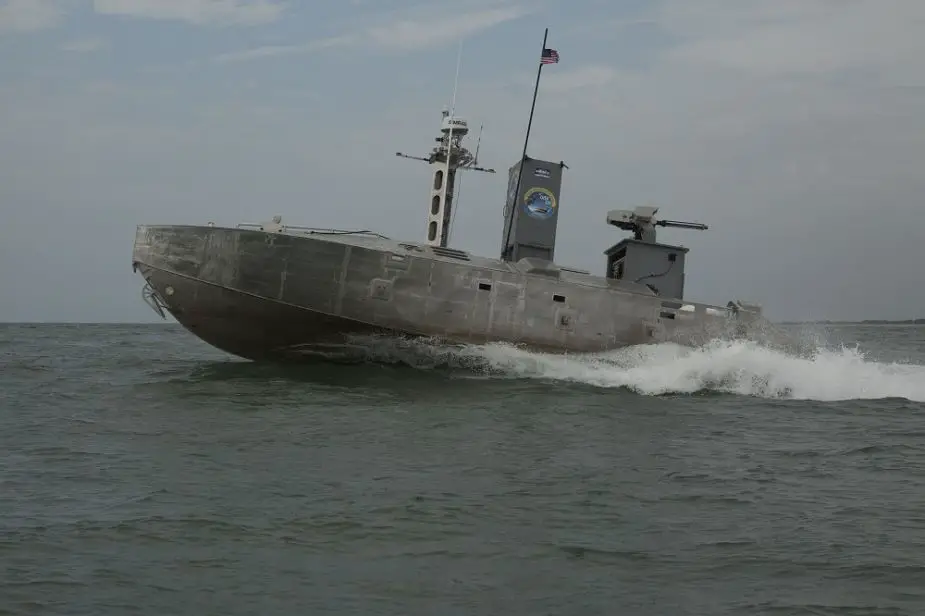Breaking news
Live demonstration with Expeditionary Warfare Unmanned Surface Vessel for US Navy.
A Live demonstration was performed with the Expeditionary Warfare Unmanned Surface Vessel (USV) during Advanced Naval Technology Exercise (ANTX) 2019. Specifically, the Expeditionary Warfare USV could transform how the U.S. Navy and Marine Corps provide maritime force protection and maneuver with payloads that include a Longbow Hellfire Missile Launcher and a 50 caliber machine gun on a Sea deFNnder Remote Weapon Station.
 An Expeditionary Warfare Unmanned Surface Vessel (USV) autonomously navigates a predetermined course through the water during Advanced Naval Technology Exercise 2019. (Picture source U.S. Navy)
An Expeditionary Warfare Unmanned Surface Vessel (USV) autonomously navigates a predetermined course through the water during Advanced Naval Technology Exercise 2019. (Picture source U.S. Navy)
The U.S. Navy civilian engineers who developed a unique weaponized unmanned surface vehicle (USV) tested by the Marine Corps envision that its technological capabilities will revolutionize naval warfare, they announced in an interview conducted at Naval Surface Warfare Center Dahlgren Division (NSWCDD), August 26, 2019.
The Expeditionary Warfare USV – capable of performing force protection and long-range USV missions during distributed maritime operations, littoral operations in a contested environment, and expeditionary advanced base operations – was developed for Navy surface warfare and Marine Corps expeditionary warfare missions.
U.S. Marines and distinguished visitors – including Assistant Secretary of the Navy for Research, Development and Acquisition James Geurts and Assistant Commandant of the Marine Corps Gen. Gary Thomas – observed that large-scale potential at a live demonstration as the Expeditionary Warfare USV performed a force protection mission for a high-value asset at the July 18 exercise.
The U.S. Marine Corps general emphasized that the Marines need new capabilities for their concept of operations to work and that they need them quickly.
The Expeditionary Warfare USV consists of a 40-foot self-driving boat, a HellFire Longbow missile system, and a .50 gun mounted on a remote weapon station. The boat uses radar and video to navigate, find and track surface contacts while providing tactical behaviors such as automated patrol, intercept, and chase. The gun and missile system use video and infrared systems to automatically identify targets, alert the weapon operator, and provide fire control. The system is operated remotely, either from an ashore site or a ship.
The U.S. Navy and Marine Corps are currently assessing the results of the ANTX – including the Expeditionary Warfare USV’s capability of performing expeditionary, littoral, and force protection operations as well as its long-range USV missions in support of expeditionary advanced based -operations. The services will determine if there is potential for further development of any of the technologies demonstrated at the July ‘Fight the Naval Force Forward’ ANTX.
NSWCDD invested approximately $5 million in Naval Innovative Science and Engineering (NISE) Section 219 investments in fiscal year 2018-2019 to enable the command’s scientists and engineers to mature the automated targeting, adaptable missile launcher, and weapons control systems and integrate them into the autonomous Textron System’s CUSV platform creating the Expeditionary Warfare USV.




























